In the last blog I discussed the importance of paying attention to the basics and how that impacts physician communication with patients. Building off of those, let’s take a look at some of the best practices of high performers and key strategies for improvement.
High Performers & Best Practices
In my work, I have the opportunity to collaborate with high performers in physician communication—both in the inpatient/HCAHPS realm and also in the outpatient/CG-CAHPS realm as well as the emergency department/ED-PEC sphere. While some of the strategies that they employ may be slightly different, here are some best practices that have worked for the high performers time and again:
- Take a data-driven approach to identify key performance opportunities
- Focus on improvement one goal at a time
- Involve the physicians early on in practice changes
- Observe the patient experience from a patient’s entire journey and perspective
- Recognize that in order for patients to be happy, you have to have a happy team. Connect the dots between physician satisfaction, employee engagement and patient experience.
- Recognize that no plan ever goes exactly as intended and expect that there will be bumps along the road
- Accept and expect ongoing change as a part of the reality of healthcare and the improvement journey
- Hold people accountable—make tough decisions when individual behaviors do not match organizational values
Key Strategies for Improvement
How you organize and implement best practices will help determine how successfully you can improve communications across the continuum. It is imperative that you use your data to help focus your strategies and resources in the areas of greatest impact. Here are some examples:
Goal Setting & Compensation
Start by identifying a key area of focus. From there, many organizations have internal scorecards tracking these metrics and the progress towards goals. Increasingly, organizations will tie physician incentives or other components of compensation to achievement of patient experience goals.
Data & Reporting
Sharing the survey and other experience data at the unit, site or clinic level is a starting point. However, being able to customize and pull the data by the provider group, and ultimately the individual provider, can lead to transformational progress. These data, accompanied by a process leading to full transparency, are key to achieving even greater results. The most sophisticated level of reporting is found in organizations that create an Enterprise Data Warehouse for broader analysis, combining the clinical and experiential metrics.
Projecting the Patient Voice
Even more so than the numeric values on the patient surveys, the words of the patients themselves resonate deeply with physicians and other caregivers. At a minimum, start by sharing patients’ comments and stories. Put together awards, letters and recognition opportunities when physicians are specifically named in patient comments. Creating a Patient & Family Advisory Council is another amazing way to get really great feedback about various aspects of communication. Ultimately, many organizations then progress to having patients serve on committees alongside physicians and staff.
Service Strategy & Training
At a minimum, ensure that ongoing discussion of patient experience and improvement is happening at provider meetings. The next level involves developing or adopting a service mnemonic or other mechanism by which the organization decides to organize its content (e.g., AIDET, LEADER, etc.) and providing some videos or other vignettes to help illustrate key points in physician communication. Finally, providing service training and creative CME events are great ways to reinforce the behaviors and concepts key to improvement in physician communication.
Other Key Strategies
Be creative! Incorporating strategies ranging from something as simple as photo business cards to share when meeting new patients to physician newsletters focused on communication and patient experience can be helpful. In the inpatient and emergency areas, having physicians write their names on the care board is a step in the right direction. The next level of commitment and resourcing can support you in a physician coaching program or with some mystery shopping. Many organizations also utilize a concept of SWAT teams (focused groups that can descend upon a unit, clinic, department) to focus on improvement areas, as well as working towards Patient Centered Medical Home Certification.
By incorporating some of the spectrum of strategies above, and working collaboratively with your physicians, your organization can see great success in improving your physician communication dimension. Stay tuned for the next blog where we will discuss one of the most powerful tools for improving physician communication!
